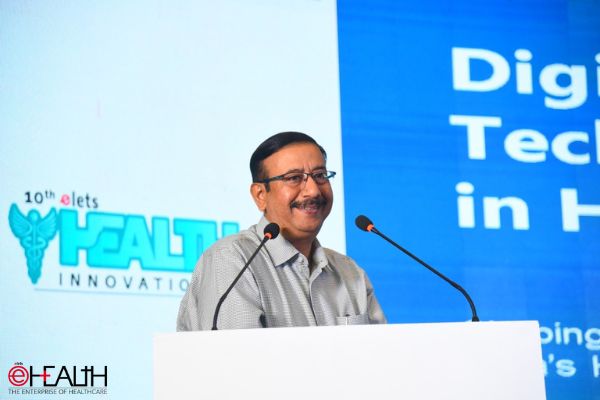
Client-centered interventions are the key to making health systems more resilient and responsive, expressed Arun Kumar Singh, Additional, Chief Secretary, Department of Health & Family Welfare (H&FW), Government of Jharkhand at the 10th Elets Healthcare Innovation Summit in New Delhi. Edited excerpts:
How can technology transform healthcare?

Digital health has a profound impact on the delivery of health services. The sustainable healthcare system can be built by balancing the relationship between the medical professionals and the patient, and by providing cheaper, faster, and more effective solutions for diseases.
Under the Ayushman Bharat Digital Mission (ABDM), people can create Ayushman Bharat Health Account (ABHA) to manage their health records more effectively. The whole gamut of information such as health care professional registry, health care facility registry, health records, and electronic medical records are collated to bring out the best results. It can be used to identify the risks and reduce the harm in the primary care setting.

The ABDM is going to be a game changer since all the data is on one single platform, paving the way for a transparent system.
The electronic prescriptions are going to be a part of the ABDM.
How can the health system be optimally utilised?
Technology can play a significant role in utilisation of the drugs inventory management, and mapping & monitoring of infectious diseases. Moreover, technology can be used to enhance primary healthcare by facilitating clinical support, monitoring the quality of care, and also by tracking supplies of drugs and vaccines. This builds a robust referral system that assists in diminishing the unnecessary hospitalisation of patients. Digital tools such as e-learning, disease monitoring, surveillance, and targeted health campaigns are various technological solutions that can be utilised for providing primary health care.
How is technology empowering healthcare in rural areas of Jharkhand?
In Jharkhand, ASHAs, known as “Sahiyas”, have been supporting delivery of health care services to the last mile. We have empowered 40,000 ASHA workers to take care of healthcare in around 33,000 villages. ASHA workers keep a check on each and every village household.
The ASHA workers are empowered through an e-tool under Swasthya Prahari Yojana. Under this project, various health facilities will be provided in rural areas through an app. A Sahiya app will be developed for this purpose.
We are also working with the Mamta Vahan Service to provide the referral transport service to pregnant women.
India is trying to increase the network and new schemes are being launched to enable the network to reach the rural areas, but still it is a challenge.
Please give an overview of key technology-driven healthcare initiatives in the state.
- Health GIS: Health GIS facility is developed by Jharkhand Space Applications Center (JSAC) for National Health Mission (NHM). All health facilities are mapped in the system with availability on the web for public access
- MIS for Bio-Medical Waste Management: Bio-Medical Waste Management application has been implemented in the state up to Community Health Centers (CHCs).
- Implementation of e-Hospital: Currently e-Hospital is running in five district hospitals i.e. DH Ranchi, DH Khunti, DH Chatra, DH Giridih, and DH Ramgarh along with Rajendra Institute of Medical Science (RIMS) and Central Institute of Psychiatry (CIP).
- Sahiya Sangi Portal: This portal is used for Strengthening HBNC (Home Based Newborn Care) activities done by the Community Mobilization cell, NHM Jharkhand.
- Participatory Learning and Action (PLA): This portal is dedicated to the Participatory Learning and Action approach, run by the Community Mobilisation cell, NHM Jharkhand.
- Human Resource Information System (HRIS): HRIS has been implemented in NHM at the state level and District level implementation is in process. This software is developed by C-DAC.
- e-Aushadhi (DVDMS): Drugs and Vaccine Distribution Management System up to CHC level.
- Swaraksha Portal: It is Technology-integrated strategy for managing the COVID-19 patients under home isolation.
- Interactive Voice Recording (IVR)-based Surveillance for the Covid-19 patients in Home Isolation.
- Online MIS for Malnutrition Treatment Center (MTC).
- T3 App: Test, Treat & Track app for Anaemia Mukt Bharat (AMB) in the final stage of readiness
- Multi-model pulse oximeter for pneumonia detection as a pilot project
- Fetal heart rate ambulatory device as a pilot project
Technology has the potential to accelerate access, and enhance equity in coverage of health services by reaching the unreached. Technology interventions like IVRS and Telemedicine can improve the efficiency and effectiveness of the healthcare value chain.
Be a part of Elets Collaborative Initiatives. Join Us for Upcoming Events and explore business opportunities. Like us on Facebook , connect with us on LinkedIn and follow us on Twitter , Instagram.












